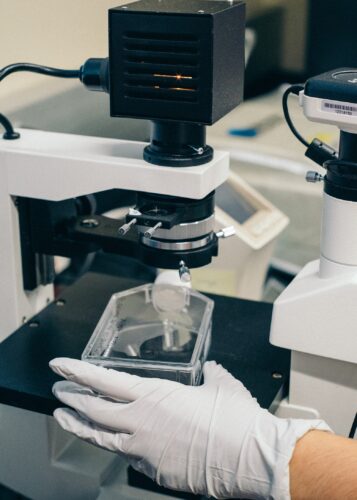
Nanocraft
CBD is a relatively new industry, and as technology is …
CBD is a relatively new industry, and as technology is increasingly used in its production, it’s understandable innovation would come to the fore. Indeed, modern manufacturing processes like organic harvesting and alcohol extraction have significantly improved the quality of CBD products. However, several companies throw around fancy terms to mislead consumers about the effectiveness of their products. One of the latest fads in this regard is CBD ‘nanotechnology’.
While the jury is still out on just how effective nanotechnology can be when used in CBD production, many companies parade their achievements of reducing the size of CBD molecules as the means to create a superior product, when it is just not true.
Nanotechnology and CBD have been proven to be a potent combination by many studies, and companies that use state of the art technology can create a better product than currently available. However, Nano CBD’s superiority is not due to the size of the molecule. Rather it’s due to its effect on bioavailability and how your body absorbs the CBD.
To understand this completely, we need first to learn what bioavailability means and how the body processes CBD.

The way your body processes vegetables is entirely different from the way it processes fast foods. This fact stays the same for drugs and supplements as well. How your body absorbs any item you consume is termed as bioavailability.
When you take any drug, it is broken down by the enzymes in the liver and then transported to different parts of the body. The speed and way it processes these chemicals usually determine the bioavailability of the said drug.
Researches have shown that the bioavailability of CBD is very low, at around 6%. However, most manufacturers have found ways to allow your body to absorb CBD much quicker, usually by using carrier oils.
Researchers, though, believe it’s possible to use nanotechnology to increase the bioavailability of CBD. This would mean your body could make most of the CBD you consume, inevitably leading to lower doses and less wastage.
Any kind of engineering/technical process undertaken in particles at a nanometer level is termed as nanotechnology. For example, a single molecule of cannabidiol (CBD) is about 4440 Nanometers in diameter.
Innovative companies are trying to use this idea to shrink down the CBD molecules to nano levels to make it more easily bioavailable. Their marketing strategy portrays the human body as being capable of efficiently transporting CBD through blood and into the liver this way. The belief is that it would improve how the Endocannabinoid System acquires CBD using nantechnology.
According to Cade Turland, CEO and co-founder of Hemple—an Australian-owned hemp and CBD product company that’s big on nano CBD—it’s all about speed, efficacy, and cost-effectiveness. “When you break the math down: If you have a 10 mg product of regular CBD oil, the max you’ll absorb into your cells is about 2 mg. But if you’re taking a nano-emulsified product, you can get absorption before the digestive system and as much as 8 mg to the cells.”
It does, but not in the way companies would have you believe. Shrinking down the size of CBD molecules has not shown to have any direct effect on how the ECS absorbs it. However, the bioavailability is improved mainly due to its lipophilic qualities.
Molecules can either be water-based or lipid-based. Certain molecules exhibit both qualities, being lipophilic and hydrophilic. However, CBD is lipid fat-based and hydrophobic.
This is the reason it has such a bioavailability in the human body, which is primarily water. When MCT or coconut oil is used as a carrier to allow the body to absorb CBD better, the digestive system slows down the process.
However, when CBD molecules are broken down to nano sizes though, they start to exhibit both lipophilic and hydrophilic properties. This means CBD can now bind to both water and fat cells. Nano CBD improves the bioavailability of the compound and helps your body process it more freely and effectively.
While certain researches on Nano CBD have certainly been promising, the claims made by a lot of companies are absolute hogwash. CBD doesn’t automatically get better because it is shrunk to a nano size, but more so because they are covered with a lipophilic coating, namely URB597, AM251, and Rimonabant.
This method is what converts a difficult to digest particle in CBD to a more readily available molecule that is accepted by the Endocannabinoid System.
This is still a nascent field, and thus a lot more evidence needs to be obtained before it can be claimed that nanotechnology produces significantly better CBD. However, if the track record is anything to go by, it wouldn’t be long before most companies use nanotechnology as a standard for CBD products.
Buy a sample pack and give it a try yourself.
References:
1.https://svnspace.com/blogs/cbd/what-is-nano-cbd
Comments (0)